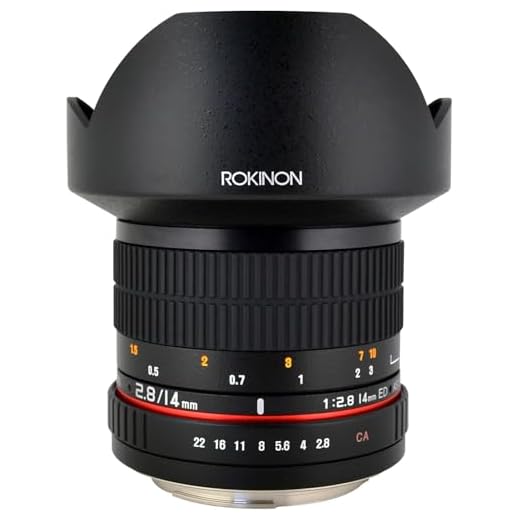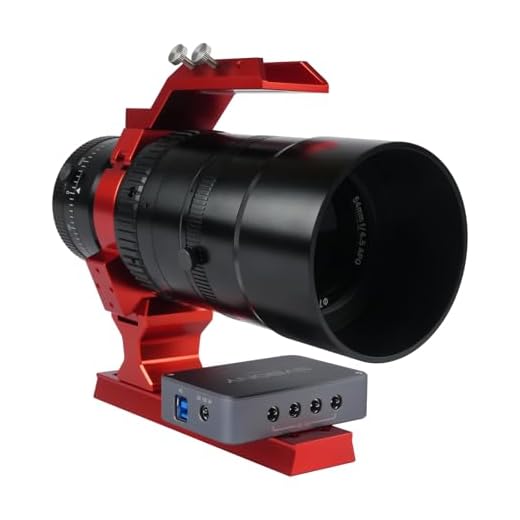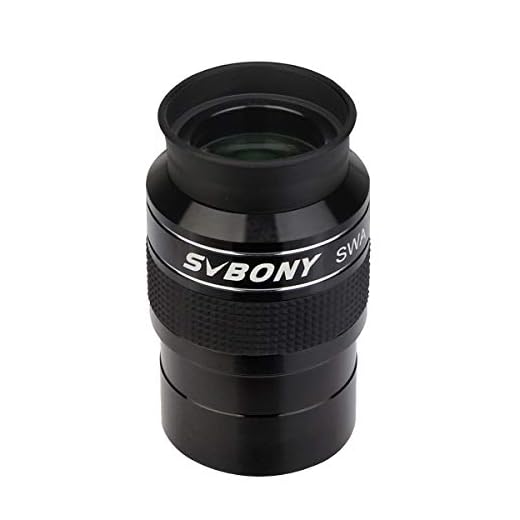



If you’re aiming to capture the beauty of the cosmos, I recommend starting with a fast aperture prime and a versatile zoom. These types of optics excel at collecting light, which is essential when shooting in low-light conditions such as starry nights or celestial events.
This article discusses the most suitable gear for those interested in nighttime celestial photography. I delve into specific models that have proven to deliver stunning results, whether you’re capturing pin-sharp stars, the Milky Way, or distant galaxies.
This content will be particularly useful for amateur astronomers, photography enthusiasts, and anyone keen on exploring the wonders of the night sky. By the end, you’ll have a clearer idea of what to look for, including focal lengths, image quality, and compatibility with various camera systems, helping you to make informed decisions on your next purchase.
Best Camera Lenses for Astrophotography
For capturing the wonders of the night sky, I recommend opting for wide-angle optics that feature a large maximum aperture. This choice allows more light to hit the sensor, which is paramount when attempting to photograph celestial objects. A fast lens with an aperture of f/2.8 or wider greatly enhances your ability to collect light, reducing exposure times and minimizing star trailing.
I find that prime optics are often superior due to their optical quality and increased sharpness compared to zoom alternatives. While zoom lenses offer versatility, a fixed focal length tends to yield better overall image clarity and lower distortion–key factors in showcasing astronomical details. Furthermore, a shorter focal length expands the field of view, making it easier to capture expansive star fields and constellations.
Key Features to Consider
- Aperture: An aperture of f/2.8 or wider is ideal for night sky photography.
- Focal Length: A range between 14mm to 24mm is generally recommended to capture wider scenes.
- Image Stabilization: Useful for handheld shooting to reduce blurriness from camera shake.
- Optical Quality: Look for designs with minimal chromatic aberration and high contrast.
When selecting an optic, also consider the lens mount compatibility with your existing gear to ensure reliable performance. I’ve often found that trying different optics enhances not only my understanding but also the quality of my images over time. The choice ultimately hinges upon personal preferences and shooting style, but focusing on the features outlined will significantly improve your astrophotography results.
Prime Lenses with Wide Apertures
For capturing the night sky, prime lenses with wide apertures are exceptional choices. Their ability to gather light allows for stunning details in stars and celestial events, producing clear and vibrant images even in low light conditions.
These fixed focal length optics provide sharpness and contrast that variable lenses often cannot match. The large maximum aperture enables quicker shutter speeds, reducing the risk of motion blur from the Earth’s rotation. Additionally, the shallow depth of field can create a captivating background blur, emphasizing celestial subjects.
Advantages of Wide Apertures
- Improved Light Gathering: A wider aperture gives the opportunity to capture more light, resulting in clearer images of distant stars.
- Less Noise: Using less ISO when shooting reduces the amount of noise, leading to smoother images.
- Shallow Depth of Field: This effect is great for isolating subjects in the foreground against the starry background.
- Faster Focusing: Wide apertures allow for better performance in low-light conditions, making it easier to achieve focus on distant objects.
When selecting these prime optics, consider the focal length that best suits your style. Shorter focal lengths excel in capturing expansive star fields, while longer ones can reveal detail in distant objects, such as nebulae or galaxies.
In conclusion, choosing a prime lens with a wide aperture is a strategic decision for night photography. The balance between sharpness, light-gathering ability, and artistic expression makes them indispensable tools for enthusiasts and seasoned photographers alike.
Versatile Zoom Options for Night Sky Shots
I recommend considering zoom options that offer a range of focal lengths. This versatility allows for capturing both expansive night skies and detailed celestial objects without needing to switch gear. When looking for suitable glass, prioritize ones that exhibit consistent performance across their zoom range, particularly in low-light conditions.
In my experience, lenses with a maximum aperture of f/2.8 or wider perform remarkably well, ensuring ample light enters, which is critical for night photography. Additionally, a wide-angle capability can help frame the vastness of the heavens, making for compelling compositions.
Key Features to Look For
- Optical Quality: Look for minimal distortion and aberration across different focal lengths.
- Weather Sealing: A lens with weather-resistant construction helps in outdoor settings, especially under humid or chilly conditions.
- Image Stabilization: This feature can assist in reducing shake during longer exposures, which is often necessary during night shoots.
- Close Focusing Distance: The ability to focus on nearby objects can enhance foreground interest in your night shots.
Consider experimenting with various settings while using these zoom options. Adjusting the ISO carefully can help balance noise levels and image clarity. A sturdy tripod is also a must; it ensures that those longer exposure times yield sharp results while minimizing movement.
Through practice and exploration, I’ve found that a combination of these elements significantly enhances the potential for capturing stunning images of the night sky.
Ultra-Wide Angle Lenses: Capturing Vast Landscapes
Using ultra-wide angle optics has transformed how I approach breathtaking night scenes. These specific optical devices enable me to capture expansive skies adorned with stars and celestial events, accompanied by foreground features that add depth and context to my compositions.
The key to successfully utilizing these optics lies in understanding their unique characteristics. The wide field of view allows me to frame wide expanses, making it possible to include both the dazzling celestial display and significant terrestrial elements, such as mountains or trees, enhancing the visual narrative.
Techniques for Effective Use
-
Composition: I pay attention to the rule of thirds to create balanced frames. Position interesting foreground objects to lead the viewer’s eye into the scene.
-
Depth of Field: Keeping the entire frame sharp requires adjusting the aperture. I typically opt for a smaller aperture to achieve maximum sharpness from the foreground to the background.
-
Exposure Settings: Longer exposure times can capture more light, which is pivotal when photographing faint stars. I often experiment with different ISO settings to find the best compromise between clarity and noise.
One significant aspect of ultra-wide optics is the potential for distortion, particularly around the edges. I find that careful composition helps mitigate this effect. Incorporating leading lines or symmetrical elements can enhance the overall impact of the photograph.
In post-processing, adjusting distortion can help maintain the integrity of the image. Utilizing software tools allows me to correct any unwanted warping while preserving the dynamic feel that these optics can provide.
Ultimately, ultra-wide angle optics give me the ability to craft captivating imagery that showcases the magnificence of the night sky framed with earthly elements, enabling stories that connect viewers with the vastness of the universe.
Telephoto Options for Detailed Celestial Objects
To capture intricate details of celestial phenomena, long focal lengths are invaluable. The ability to magnify distant subjects provides a deeper appreciation of structures in the universe, such as craters on the moon or the vivid details of planetary atmospheres. When selecting a telephoto option, I prioritize those with wide maximum apertures to enhance light-gathering capabilities.
High-quality optics are critical for obtaining sharp images. I often look for designs that minimize chromatic aberration, as this can drastically affect image quality when photographing bright stars or planetary surfaces. An effective optical coating can also play a significant role in combating lens flare and ghosting, ensuring clarity across the frame.
Key Features to Consider
- Focal Length: Longer focal lengths can isolate subjects better and offer improved detail.
- Aperture Size: Wider apertures allow more light, aiding in nighttime shooting conditions.
- Image Stabilization: Helps mitigate the effects of camera shake, which is crucial at high magnifications.
- Construction Quality: Durable build helps withstand various environmental conditions.
As I explore a variety of options, I also pay attention to compatibility with my other gear. Using teleconverters can extend the reach of these optical setups further, which is especially useful when aiming to photograph more distant celestial events like supernovae or specific star clusters. It’s fascinating to experiment with different combinations to see how they impact the final outcome.
In practice, patience and experimentation often yield the best results. Taking multiple exposures and employing stacking techniques can significantly enhance clarity and detail in the final image. Analyzing past results helps refine my approach, ensuring each outing leads to new discoveries.
Affordable Lenses for Beginners in Astrophotography
When seeking entry-level optics for capturing the night sky, I found that the focal length plays a significant role. Wide-angle glass with a lower f-stop allowed me to gather more light, making it easier to photograph celestial objects. The low f-stop number is particularly beneficial for long exposure times, which are essential in this type of photography.
Another aspect that stood out to me was the build quality. A solid construction, often featured in budget options, contributes to stability during exposure sessions. While I started out with less expensive models, the performance in low-light conditions exceeded my expectations and encouraged me to explore further.
Key Features to Consider
- Focal Length: Opt for lenses in the range of 14mm to 24mm for wide shots.
- Aperture: Select models with a maximum aperture of f/2.8 or lower.
- Build Quality: Sturdy construction helps minimize vibrations.
- Compatibility: Ensure the chosen glass works with your camera type.
Experimenting with these characteristics allowed me to improve my craft significantly. Finding affordable options that merged these elements can enhance the experience without straining the budget.
As I progressed, I realized that investing in sturdy tripod support was equally important. Good optics paired with stable support can yield impressive results, transforming ordinary views into stunning astronomical captures.
Specialized Lenses Designed for Astrophotography
Choosing optics tailored specifically for celestial imaging can significantly enhance the quality of my photographs. When considering my options, I often look for features that allow for exceptional light gathering capabilities and reduced distortion. The ability to produce sharp, contrast-rich images of stars and galaxies is essential for my work.
One of the primary attributes I prioritize is a wide aperture. This characteristic permits greater light intake, which helps capture faint astronomical objects. Additionally, a lens with low chromatic aberration is beneficial, ensuring that colors remain true and vibrant, even in high-contrast scenarios. This is particularly important when I am photographing objects like nebulae or star clusters.
Types of Specialized Optics
- Prime Options: These are often favored for their superior sharpness and minimal optical flaws. The fixed focal length can help me achieve better results in specific situations.
- Wide-Angle Variants: Their expansive field of view is ideal for capturing vast scenes of the night sky, allowing me to include a substantial portion of the cosmos in one frame.
- Telephoto Choices: These allow close-up images of distant celestial targets, enhancing detail and clarity for galaxies and other objects light-years away.
It is also wise to consider compatibility with my specific equipment. Some designs incorporate advanced coatings that minimize reflections and flare, which can be critical during low-light conditions typical of night photography. This attention to detail ensures I can maximize the quality of each shot.
In conclusion, selecting optics with unique specifications for celestial photography not only boosts the overall image quality but also enhances my creative expression. By focusing on essential elements such as aperture size and optical correction, I can achieve stunning results in my nighttime imaging pursuits.
Lenses with Image Stabilization Features
When capturing celestial bodies, the inclusion of stabilization can significantly enhance image quality. In low-light conditions, such as photographing stars or the Milky Way, even slight vibrations can lead to motion blur. Lenses equipped with image stabilization (IS) technology minimize this issue, allowing for sharper images during longer exposures.
One standout option is the Canon EF 24-70mm f/2.8L IS II USM, which includes a 4-stop stabilization feature. This versatility makes it suitable for both wide landscapes and detailed shots of the night sky. Similarly, the Nikon Z 24-70mm f/2.8 S offers remarkable IS performance, ensuring clarity when shooting handheld in dim environments.
- Canon EF 24-70mm f/2.8L IS II USM
- Nikon Z 24-70mm f/2.8 S
- Sigma 24-70mm f/2.8 DG OS HSM Art
- Tamron 15-30mm f/2.8 Di VC USD
Each of these options provides not just a wide open aperture but also the assurance that shaking due to wind or hand movement will be reduced, resulting in images that maintain their sharpness and details. In fulfilling your astrophotographic endeavors, selecting glass with IS capabilities can lead to a more successful session under the stars.
Ultimately, balancing aperture size and stabilization features can enhance your photography experience, allowing for dynamic captures of the night sky without the limitations imposed by shake. Incorporating stabilized optics into your kit allows for greater creativity and flexibility when faced with challenging conditions.
Best camera lenses for astrophotography
Features
| Part Number | 20102 |
| Model | 20102 |
| Warranty | 1 year manufacturer |
| Color | Black |
| Release Date | 2021-09-30T00:00:01Z |
Features
| Part Number | FE14M-C |
| Model | 134345789 |
| Warranty | One Year Limited Manufacturer Warranty |
| Color | Black |
| Is Adult Product | |
| Release Date | 2014-01-01T00:00:01Z |
| Language | English |
Features
| Part Number | 0570C002 |
| Model | 0570C005AA |
| Warranty | 1 year coverage for parts |
| Color | Black |
| Is Adult Product | |
| Release Date | 2015-05-21T00:00:01Z |
| Size | Lens Only |
| Language | English |
| Publication Date | 2019-06-17T00:00:01Z |
Features
| Part Number | FE14MAF-N |
| Model | FE14MAF-N |
| Warranty | Limited 1 Year Manufacturer |
| Color | Black |
| Release Date | 2014-01-01T00:00:01Z |
| Language | English |
Features
| Color | black |
Features
| Part Number | 6262C002 |
| Model | 6262C002 |
| Warranty | 1 year manufacturer |
| Color | Black |
| Release Date | 2023-12-04T00:00:01Z |
Features
| Part Number | FW9117B |
| Model | FW9117B |
| Warranty | We provide 1 year warranty for SVBONY telescope accessories and 30 days no reason to return. Beyond the warranty period: We still offer maintain service, buyers are required to afford corresponding costs. We processed in the most hassle-free way possible.You just need to contact with us on Amazon ,we will reply you within 12 hours |
| Color | black |
| Size | 2 in |
FAQ:
What are the key factors to consider when choosing a lens for astrophotography?
When selecting a lens for astrophotography, several factors play a significant role. Firstly, the aperture size is vital; a wider aperture (lower f-number) allows more light to enter, which is crucial for capturing faint stars and celestial objects. Secondly, the focal length of the lens affects the field of view and the ability to zoom in on distant objects. A shorter focal length can capture wider views of the night sky, while a longer focal length enables detailed shots of specific targets like the moon or deep-sky objects. The quality of the lens, particularly its sharpness and the presence of aberrations, also influences the final image quality. Lastly, build quality and compatibility with your camera system are important to ensure smooth operation and longevity.
Can you recommend specific lenses for astrophotography?
Some popular lens choices for astrophotography include the Canon EF 24mm f/1.4L II USM and the Nikon AF-S 14-24mm f/2.8G, both known for their excellent optical quality and wide apertures. For those on a budget, the Rokinon 14mm f/2.8 and the Sigma 16mm f/1.4 DC DN offer great performance at a lower price point. Mirrorless users may find the Sony FE 24mm f/1.4 GM to be a fantastic option as well. Each of these lenses provides a good balance of light collection ability, sharpness, and functionality for capturing the night sky.
How does the lens quality impact astrophotography results?
The quality of a lens significantly impacts astrophotography by affecting factors such as sharpness, distortion, and chromatic aberration. A high-quality lens provides sharp images with minimal blurriness, especially important when capturing distant stars and intricate details of nebulae. Distortion can lead to curved or warped star trails, which detracts from the overall image appeal. Chromatic aberration results in color fringing, especially around bright objects, which can again diminish image quality. Investing in a well-regarded lens can greatly enhance the clarity and aesthetic quality of astrophotographic images.
What is the difference between wide-angle and telephoto lenses for astrophotography?
Wide-angle lenses typically have shorter focal lengths and are excellent for capturing expansive views of the night sky, making them ideal for scenes that include the Milky Way or large constellations. They allow photographers to include foreground elements like landscapes, enhancing the composition. In contrast, telephoto lenses have longer focal lengths and are suited for detailed shots of specific celestial objects, such as the moon or planets. While they can capture more detail, they generally require more precise tracking and may not gather light as effectively as wide-angle lenses. Therefore, the choice between them depends on the desired photographic subject within astrophotography.










